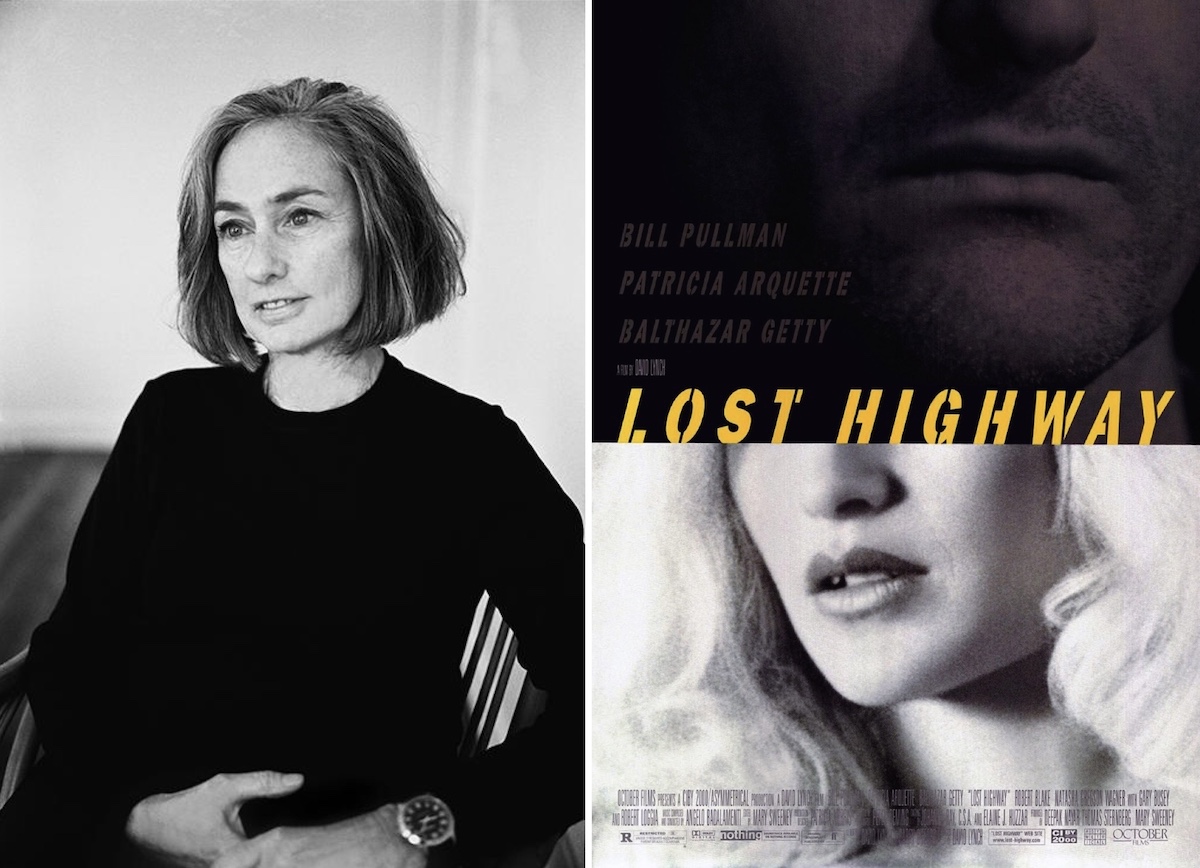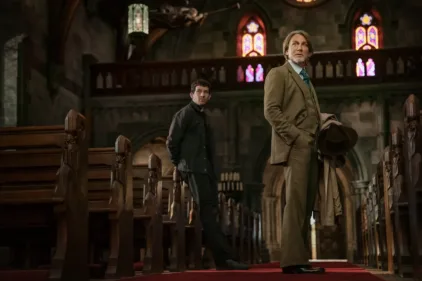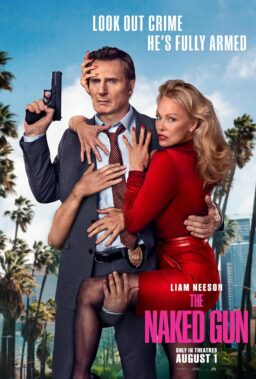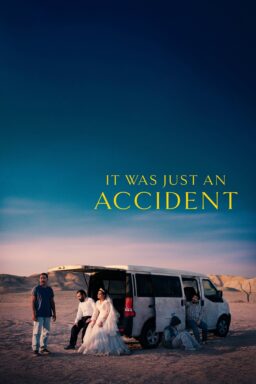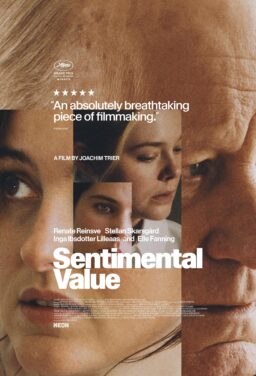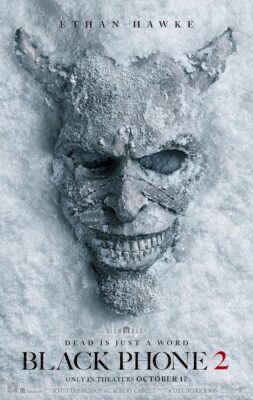Few editors have impacted the way I view cinema as profoundly as Mary Sweeney. Her professional partnership with David Lynch, which spanned two decades, began when she served as assistant editor on his 1986 landmark, “Blue Velvet,” followed by roles as first assistant film editor and script supervisor on 1990’s Palme d’Or winner, “Wild at Heart.” Her first solo editing assignment was the seventh episode of “Twin Peaks” in its second season, which is arguably the greatest hour of the initial series, paving the way for 1992’s “Twin Peaks: Fire Walk With Me” (which she also edited), as well as the wildly audacious 18-part magnum opus that is 2017’s “Twin Peaks: The Return.” Thanks to Daniel Knox’s recent Lynch retrospective at Chicago’s Music Box Theatre, I was able to view Sweeney’s work on the hilarious pilot of Lynch’s “On the Air,” and the mesmerizing first episode of “Hotel Room”—two shows that were sadly short-lived—on the big screen.
Having grown up in the midwest, Sweeney was so moved by the true story of Alvin Straight, an elderly man who drove 240 miles from Iowa to Wisconsin on a riding mower to visit his ailing brother in 1994, that she co-wrote a script with her friend John Roach that was based on his journey. The resulting film, 1999’s glorious “The Straight Story,” earned Lynch his only G rating, as well as its magnificent leading man, Richard Farnsworth, his first Best Actor Oscar nomination mere months prior to his passing in October of 2000. Sweeney’s editing beautifully complements the score by Lynch’s frequent collaborator Angelo Badalamenti, which accompanied countless road trips my family took through the farm fields of Illinois to visit my uncle Chuck, whose indomitable soul is similar to that of Alvin’s.
And then there’s my all-time favorite film, 2001’s “Mulholland Dr.”, which led Sweeney to receive a well-deserved BAFTA, while igniting the career of its star, Naomi Watts, whose portrayal of aspiring actress Betty ranks among the most astonishing Lynch has ever directed. Prior to these two cinematic masterworks, Sweeney edited one of Lynch’s most haunting and challenging films to date, 1997’s “Lost Highway,” which served as a crucial precursor for all that followed. Though its narrative trickery centering on the tormented relationship between saxophonist Fred Madison (Bill Pullman) and his wife Renee (Patricia Arquette) has proven to be more accessible to modern audiences—as affirmed by the rapturous response it received at Knox’s retrospective—it was considered an impenetrable head-scratcher by critics and audiences alike when it was released. As Sweeney told Scott Ryan in his essential new book, Fire Walk With Me: Your Laura Disappeared, “David Lynch is an avant-garde filmmaker, meaning literally he is leading. He is out in the lead. He is forging a trail.”

Sweeney’s personal relationship with Lynch produced a son, musician Riley, who memorably appeared in “Twin Peaks: The Return.” Prior to the highly anticipated premiere of “Lost Highway” in its new 4K restoration distributed by Janus Films at the Music Box, Sweeney spoke with me on the phone from Madison, Wisconsin, where Lynch used to spend his summers during their many years together.
I have always likened the skills I use to write with how I approach editing. As a professor of screenwriting, do you sense a through line between the intuitive processes of writing and editing, both of which have—to borrow one of your terms—an “emotional music” to them?
Yeah, definitely. I came to screenwriting after twenty years of film editing, so I had already internalized the narrative flow and the musical flow of a feature film. I was very mindful in co-writing the screenplay for “The Straight Story” of how I would edit it, honestly, but the processes are also very different. Editing is interesting. I have happily become friends with many other editors, which of course, usually doesn’t happen when you’re working because you’re in a cave all the time for an insane number of hours. I’m in the Film Editors Branch of the Academy and I’ve been on the executive committee, so all of a sudden, I found myself meeting all these other editors for the first time. Now when you say you’ve done both, you mean you’ve done film editing?
Yes, I’ve done enough film editing to realize that I rely on the same intuition I use to gauge the rhythm of my writing.
Exactly, and that is consistent. Since you’ve done it, you can see how working with words on a page—which you have so much control over in that you’re inventing and originating the story—is very different from getting dailies and having a script. Your job is not just to translate but to transcend. Obviously, you are transcending just by shooting the script, and then from the shoot to the final rewrite, which is the edit of the script. It is a transformation at each point, and that includes when you do the sound mix. It’s such a beautiful process, making a film. It’s even more important when you’re film editing than when you’re writing to capture an ebb and flow, and it is very musical.
I’m not a musician, though music was always part of my family’s life growing up. We all had a good ear, but not the discipline or money for piano lessons. It just wasn’t in our culture, growing up in Madison. But it is so closely connected, the music of it, to emotions. Of course, emotions are so beautifully, abstractly expressed in music, and emotions in film are expressed in a way similar to how metaphors are incomplete. It’s so important that you don’t give away all the information and spell everything out. You can communicate things purely through motion and expression and sound effects. You can also mix sound effects without the composed music, which of course is the big kahuna of shaping a film in terms of pushing the emotions. Audiences today are sophisticated, and you can’t really push the pedal to the metal with the music anymore like you could in the 40s and the 50s, because they know they are being manipulated. They are too sharp.
That idea of not spelling everything out—both as a writer and an editor—reminds me of the final moments in one of my all-time favorite films, “The Straight Story,” which was the first David Lynch film I ever saw.
Oh wow! What an introduction to David! Okay, get ready… [laughs]
I love how you linger in the meaningful silence shared between the brothers, rather than rely on reams of dialogue.
I had the great privilege of being able to rewrite in case anybody else decided to do stuff with that script. I had the last say. David doesn’t sit in the cutting room with me, but everything has to be according to what he likes, and fortunately, we liked a lot of the same things. There were a number of people—and David was not one of them—who wanted more at the end of the script. They were like, “Okay…is that it?” But that story is so emotionally powerful and so simple that it could very easily lend itself to sentiment and schlock if you are not really, really temperate with it and keep it very spare. The dialogue is intentionally spare in the picture because that’s the way I remember all these people when I grew up here. It’s very much a love letter to this part of the country, and a lot of other parts of it that are considered “flyover.” I wanted to show how the people who occupy it have a dignity and though they may lack the power of language, they find other ways to communicate. The lack of dialogue and how I went about editing it was very consistent with that kind of laconic culture.
I feel Richard Farnsworth’s performance in the film is one of the greatest in all of cinema. When I interviewed the film’s score engineer and re-recording mixer, John Neff, he said that there were instances in which you read Richard his lines when he couldn’t remember them, and that you chose to leave in all the prompts picture-wise, which resulted in Alvin appearing to be a heavy thinker.
Well, let me just specify in honor of the late great Richard Farnsworth that he only had one scene where he had a lot of trouble, and I think this is what John was talking about. First of all, I wasn’t on the set a lot. I was in the cutting room most of the time. The scene that Richard struggled with involves Alvin sharing a war story with a fellow veteran in a bar, and it contained a lot of dialogue. When we shot that, I did sort of sit by Richard and prompt him. That was a particularly calibrated scene, in fact, because Wiley Harker, the other actor, was deeply moved by the dialogue, and you could tell Richard was too. He’s such a deeply feeling person that he doesn’t need to act, but he’s also an excellent actor. Richard knows about the space between the words and is really great at incorporating it. Wiley Harker was so emotional that he was sobbing at certain points, and I really had to finesse that scene quite a bit to keep his emotion in there, but not let it go too far around the bend. He was very upset. Richard was too, but less so, and his pauses did work for the scene. I had to cut some of the air out of Wiley’s takes, while preserving some of the silences, as well as keeping silences in the transitions.
The absolute insistence of the human brain to figure out whatever it is looking at is part of our survival instinct. “Oh, is that a dog over there? Or is it a bear?” When you can’t identify something, your brain goes to work immediately trying to pull up information from the file of your life and your memories in order to explain what is going on. That scene is a perfect example of what occurs when you give an audience a silence. It ends in a wide shot from across the bar on the characters’ backs, and they didn’t let it run long enough. I could’ve easily stayed on that shot for another five or ten seconds. That is such a moving scene, and when you do something abstract or withhold certain information—in this case, keeping the camera on the actors’ backs and not showing their faces, thereby letting the audience sit like these two guys are sitting and contemplating—you will, as a spectator, fill in what the meaning of that is from your own emotional landscape. Those are the films that you can’t stop thinking about in the morning.
It’s like when you read a really good book and you can’t wait to get back to all of your friends in that book. You are filling it all in and you’re picturing it in the meantime. The gaps in that scene are what the very powerful emotions between those two actors deserved. It’s similar to how I approach frightening people. The less you actually show slashing, the scarier it is. It’s certainly an old principle of filmmaking and film editing that many great editors understand. It’s not anything I’ve invented. I just clued into it very early on in the process, because David’s films really demand time for people to digest while they’re watching. There’s a lot you don’t quite understand. You’ll watch his films and think, “Wow, I really like that sex scene, but what the heck is going on here?”, or, “Oh my god! She’s chopped up in a video? Did I really see that?” You have to make sense out of it. As an editor, you need to respect the audience but you also kind of own them, and I don’t mean this to sound manipulative. You want people to enter the dream. That’s the whole idea.
In many ways, I feel that David Lynch is a kindred spirit with Fred Rogers. Both value meditation, have a preoccupation with numbers and most crucially, push against the ADD-addled status quo with their measured yet immersive pacing, enabling viewers to savor crucial details that would normally be overlooked.
That’s very funny, and I think that it’s one of the many ways in which David and I were in sync. There was never any communication about that. Nowhere in the script does it say, “Pause a couple of beats here,” or, “Give room here,” or, “Expand this moment here.” I think it was just one of those lucky breaks in that there was this intersection that we had which was never articulated between us. I could see what he was going for in the way that he shot a given scene. He shoots a ten-minute master, and the scene that comes to mind is Fred and Renee in the bedroom with the two detectives in “Lost Highway.” That dialogue just cracks me up. Every time the cops talk, I’m dying laughing, and their dialogue is all full of space. It’s hilarious. And it’s also where Fred says, “I like to remember things the way I remember them, not the way they necessarily happened.” There’s our first clue that this guy is genuinely psychotic.
David Lynch has been uncharacteristically candid when discussing what influenced “Lost Highway,” citing his fixation on the O.J. Simpson trial while saying that Fred’s psychological condition is similar to that of a psychogenic fugue, though he was only made aware of that term after the fact. When I interviewed the film’s co-writer, Barry Gifford, last year, he confirmed that Fred’s condition “is all based on medical fact that has been documented.”
I vividly recall David being glued to the TV during O.J.’s slo-mo chase and the subsequent trial. He was really soaking up everything about that, and he was also writing the script at the same time. You can see in David’s films, in his interviews, and in the way he works with all of his collaborators, that we don’t discuss messages or what anything means. All of us work in the same way. We just lock into it from the moment we read the script. I don’t read the script several times. I read it once, maybe twice, and then I start getting the scenes. That’s when the story gels for me. I know what the script says, what David shot, how he shot it, and then I just dive in for the feeling. I understand David’s version of anxiety, romance, sex and things like that. I’m not saying that because we were in a relationship together. I worked with him for a long time before then. We were in sync in certain emotional ways, and obviously not in other ways.
To what extent do you believe “Lost Highway” served as a turning point in your and Lynch’s careers, leading to future projects such as “Mulholland Dr.”?
First let me say that there absolutely is a major connection in all of these films, which is that they were directed by and come from the mind of David Lynch. That is as true of “The Elephant Man” and “The Straight Story” as it is of his other work. I know a lot of people have now tagged the three films—“Lost Highway,” “Mulholland Dr.” and “Inland Empire”—as a Los Angeles trilogy. They obviously are in some way, and that’s the way that people are understanding them. Films become a separate thing when you let them go from your hands. “Lost Highway,” as well as “Twin Peaks: Fire Walk With Me,” were not very well-received upon their initial release, and now they’ve gotten kind of a reboot. I think any editor would say they don’t watch their films very much because you’ve lived them. You know every single cut, every piece of production sound that they left in, and every piece they didn’t that are worse.
But “Lost Highway” is the one film I would love to watch any time, and I don’t know the reason for it. I can’t wait to see it at the Music Box. What a beautiful place to see it! And I’m really eager to see this 4K restoration, which I’ll likely be too late to catch back in LA. I think David was shooting differently in that film. Obviously the beginning of it is classic Lynch. It’s very straightforward and slow-moving and full of dread. Then when it switches, it’s like a rocket gets lit, with the blown out sex scene in the desert and the cabin imploding. Part of it is that location—the desert is so lush and so full of a kind of romance—and it seemed to me that David was using cranes more. I wasn’t working with David when he directed “The Elephant Man” and “Dune.” He used plenty of fancy stuff on those films, and I think he moved away from that with “Blue Velvet.” I had the impression that he was a little burnt by those previous experiences. After doing the “Twin Peaks” series and then the feature, he just sort of cut loose in “Lost Highway.”
We licensed so much great music in that film. Angelo’s got some music in there too, but the overall film had a different feel to me. For the moment when Fred goes crazy in prison, I got to create that whole montage where I introduce the cabin. It’s all these mysteries, and you get very painterly in those transitions and montages. In “Lost Highway,” I was still cutting on film, so that was very complicated work comprised of going off to the lab, cutting the original negative and doing optical work. The ending was extremely hyper-cut, which is an unbelievable task for the negative cutter. First of all, the scene featured prosthetic devices, so I really had to cut it as much as I could so that you couldn’t see it very clearly. There are literally a lot of one, two, three-frame cuts in there, and of course, when you are cutting on film, you have to reserve a frame for the negative cutter.
So cutting the end of that film was very labor-intensive. My goal was to obviously express Fred’s madness by sort of jumping back and forth, rather than have any literal illustration of how close the cops were getting or things like that. It was very subjective and all from Fred’s point of view, so I was just doing my best to make it look totally insane, as his mind is blowing up. I also wanted to keep that incredible desertscape with the cars and the lights as it got dark. David and I met with David Bowie at a recording studio in New York, and it was such a thrill to ask for his permission to get the stems of “I’m Deranged,” so that we could just bring in the local under-wind before bringing in the rest of the stems during the film’s final moments. I loved that idea, which is a testament to David Lynch’s genius.
It has been fascinating for me to examine the ways in which the unaired pilot of “Mulholland Dr.” differs from the completed film, such as how a different voice says, “Hello, it’s me, leave a message,” on Diane’s answering machine. In what ways did the pilot inform the overall rhythm of the film from an editing standpoint?
Well, again, David is the common denominator. The pilot was a David Lynch film, and it was one that ABC did not like. He went straight out and made it two hours, which is an hour and ten minutes longer than we are required to give them. It was very slow and they hated it, so they put it on the shelf. Cutting the pilot was very similar to cutting a feature because we delivered a two-hour pilot, but it had an open ending and it had to have multiple stories. I was an editor on “Twin Peaks” during the first two seasons, but the only full episode I got to edit alone was the one that David directed in which Laura’s killer is revealed. The context of your question is entirely reasonable. People want to understand the connections, but when you are working with David, there is a continuity. It’s like institutional memory. We’ve all got it once we’ve worked with him a couple of times and we don’t question anything. It’s like, “Okay, here we go.”
Betty’s audition scene in “Mulholland Dr.”, which I feel is the moment Naomi Watts became a full-fledged star, is powerful precisely because so much of it is held in a close two-shot.
Yeah, absolutely. I saw that and I tried cutting it at first. Then I was like, “No, no, no. Stay on that shot as long as you can.” In fact, I would’ve liked to stay on it longer, like that last shot of the war story scene I mentioned, but something happened in the continuity that just wasn’t resolvable. Also, the set up for that, in which the girls are practicing the scene in the kitchen, supplies about fifty percent of the power of that scene. It’s like, “Woah! Where did that come from?”
The scene that introduces the Man Behind Winkie’s delivers a tremendous jolt every time the film is screened, which I believe is in large part due to the editing.
One of the things that’s really great about that scene was David’s decision to use the great Steadicam operator Dan Kneece. I loved Dan. He was a beautiful person and a phenomenal Steadicam cinematographer. When I saw the dailies, I immediately felt the creepiness because the camera was floating very subtly over the shoulders of the actors. What is that? Who’s shooting? Who’s looking at them like that? And that is the kind of thing that your brain picks up. You’re personifying something that is a conscious camera movement. This is the beauty of cinema. There are so many reasons why that scene worked, and editing is an important one, but so is writing and directing and acting and cinematography.
All of it came together in that scene where the very subtle floating of the camera gives you this unstable feeling that someone is watching these characters. The actor Patrick Fischler, who is Julia Louis-Dreyfus’ brother-in-law, was sweating, and his nervous laugh was totally shot with anxiety. Anyone who has experienced real anxiety or panic attacks could feel the authenticity of his behavior. He was amazing. Everything about the scene, even the way in which the camera pans down to the eggs, was creepy. As an editor, you’ve gotta give it the time it needs to capture people in that emotion and hold them, but you can’t give it too much. It’s a very narrow margin.
Mary Sweeney will participate in a Q&A moderated by yours truly following the 6:20pm screening on Saturday, August 6th, of David Lynch’s “Lost Highway” in its new 4K restoration distributed by Janus Films at Chicago’s Music Box Theatre. For tickets, click here.
The 4K restoration of “Lost Highway” will be available on Blu-Ray via The Criterion Collection on October 11th, and can be preordered here.

